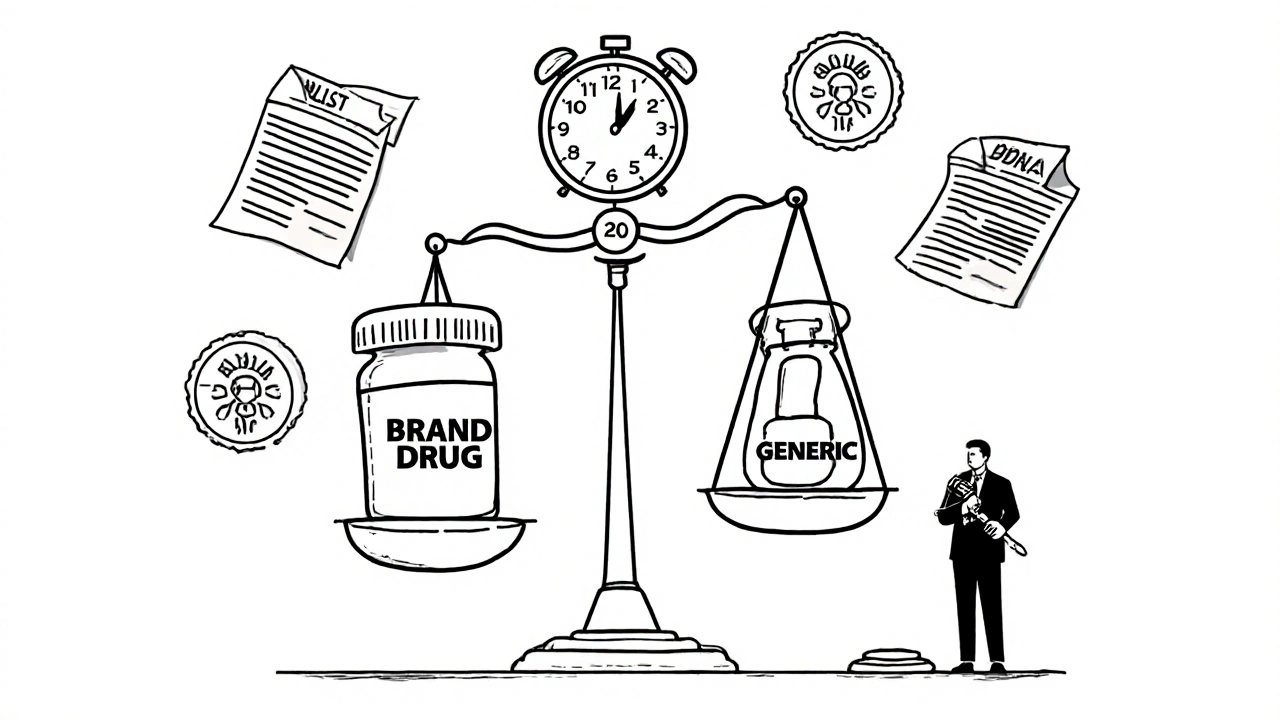Hatch-Waxman Act: How Generic Drugs Get Approved and Why It Matters
When you pick up a generic pill that costs 80% less than the brand-name version, you’re seeing the result of the Hatch-Waxman Act, a 1984 U.S. law that balanced drug innovation with affordable access by creating a faster path for generic drugs to enter the market. Also known as the Drug Price Competition and Patent Term Restoration Act, it’s the hidden engine behind most of the savings on your prescription bottle. Before this law, generic drug makers had to repeat expensive clinical trials just to prove their version worked—same active ingredient, same dose, same effect. That made generics too costly to produce, and patients paid more than they should have.
The Hatch-Waxman Act fixed that by letting generic companies file an ANDA, an Abbreviated New Drug Application that relies on the original brand’s safety and efficacy data instead of repeating trials. This cut approval time from years to months, and lowered costs dramatically. But it didn’t ignore innovation—pharmaceutical companies got extra patent protection to make up for time lost during FDA review. It was a trade: faster generics for longer brand exclusivity. Today, over 90% of prescriptions filled in the U.S. are generics, and the Act is why that’s possible. The law also created the first clear rules for patent challenges, letting generic makers contest weak or shady patents before launching their product. That’s why you see so many generic versions of popular drugs hit the market all at once—sometimes within days of each other. It’s not chaos; it’s the system working as designed.
What you won’t find in this collection are vague claims about "drug savings" or generic quality myths. Instead, you’ll see real, practical breakdowns of how the Hatch-Waxman Act connects to today’s drug landscape: how long the FDA takes to approve generics, why some drugs still cost too much even after patents expire, and how companies exploit loopholes to delay competition. You’ll also find posts about how blockchain is now being used to verify generic drug authenticity—a modern layer built on top of this 40-year-old foundation. Whether you’re paying out of pocket, managing chronic conditions, or just wondering why your insulin costs less than it used to, the Hatch-Waxman Act is the reason. Below, you’ll find clear, no-fluff guides that show you exactly how this law affects your medicine, your wallet, and your health.
- Colin Hurd
- Nov, 20 2025
- 8 Comments
Patent Law and Generics: How Patents Protect Innovation in Pharmaceutical Drugs
Patent law protects pharmaceutical innovation by granting temporary monopolies, but also enables affordable generics through the Hatch-Waxman Act. This balance drives medical progress while saving billions in healthcare costs.

